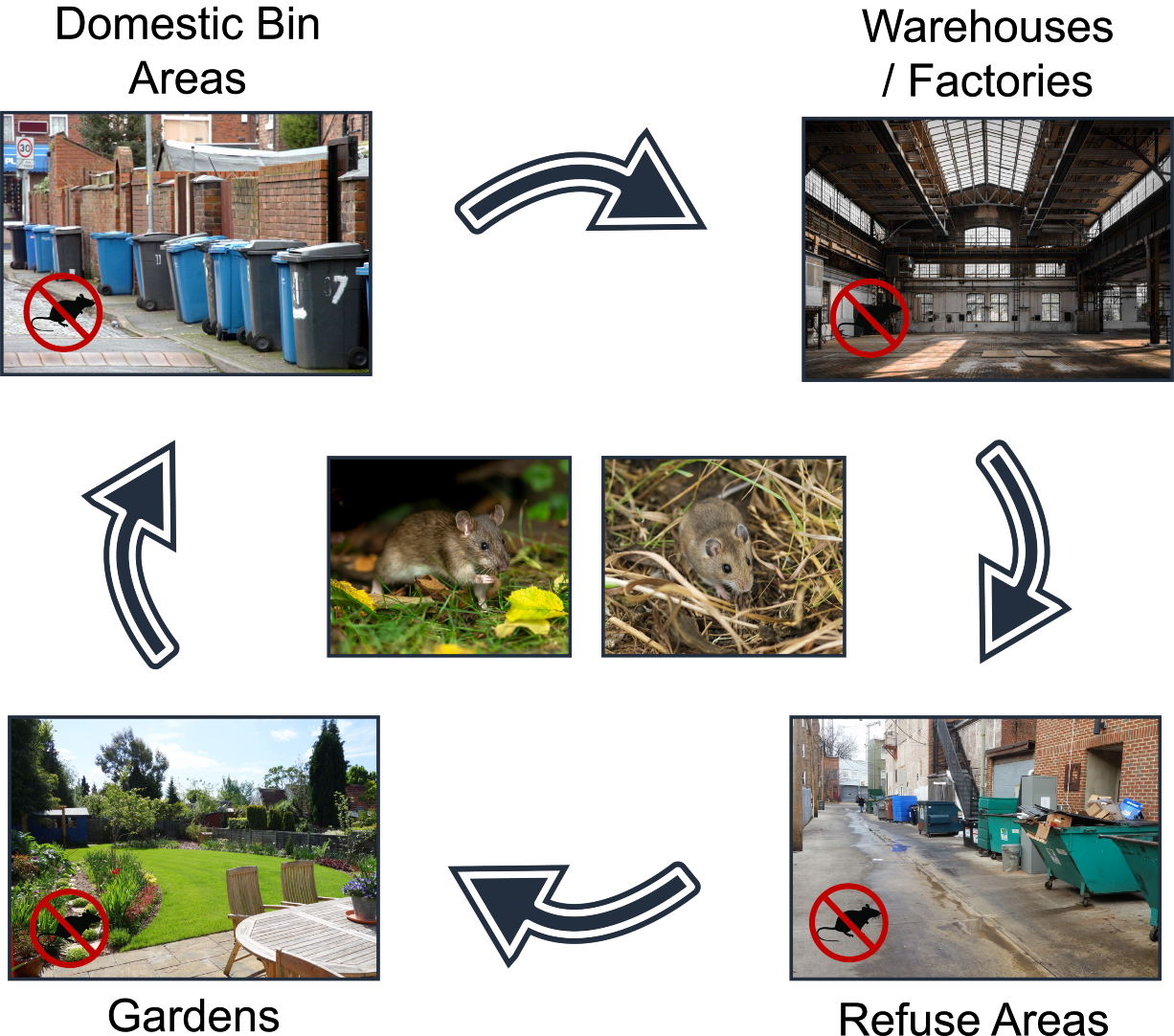Rats and Mice Applications
Rats
Rats are a well known worldwide pest due to their capacity to cause structural damage, spread life-threatening diseases and compete with humans for food. The species most commonly found in Europe is known as the Norway Rat. Rats transmit diseases that are potentially fatal to humans, such as Weil’s disease. They also carry organisms that can harm our health such as salmonella bacteria, viruses and parasites like nematodes or worms. Damage by rats to the fabric of buildings can be costly. After a rat has gnawed a cable, fires can easily be started. Rat burrowing can undermine foundations and damage water courses. Physically very strong, rats have been known to survive for two days in open water, to swim a mile in open sea and to get through a gap of less than 25mm.
Mice
Mice are a very similar to rats but there are a few distinct differences. The house mouse, like rats, can cause serious structural damage. Unlike rats, they can survive with very little water and are far more erratic in their behaviour. They have a much smaller foraging range and are not afraid of new things. Being so small they are very easily carried, unnoticed, in egg boxes, food packaging, laundry baskets, etc. Entering a new location through gaps as small as 6mm. Mice build nests which are hard to find and can populate an area with new colonies quickly with devastating effect. Because mice can reach sexual maturity 42 days after birth, populations grow much faster than those of rats, which take about twice the time to reach maturity. This is why it is so important to get any mice encroaching under control as soon as possible before the problem gets out of control.

